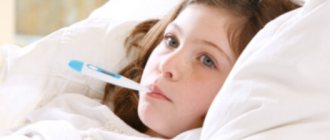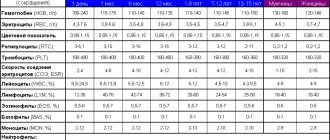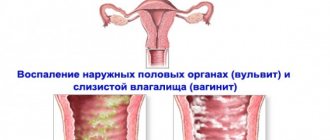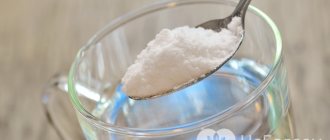Cutaneous dermatosis is a common disease that appears on the skin in different forms. Skin clams are one such form. It refers to viral diseases.
Molluscum are blistering rashes that can appear on literally any part of the body. Cases are often recorded when blisters appear on the mucous membranes. Due to their optimal size, the rashes themselves do not pose a huge threat to health, but still cause discomfort during development.
It is worth noting that the pathology belongs to the class of chronic. Having penetrated the human body, the infection lingers in it for an average of six to nine months. There are cases when the disease develops for several years if treatment is not started on time.
This type of skin dermatosis refers to smallpox diseases, so the blisters have a specific focus of development. Like other types of dermatosis, molluscs develop only in the human body. Accordingly, you can only become infected from a person. No animals are carriers of such an infection.
The shape of the rash is oval or round. The size of the bubbles, as a rule, does not exceed five millimeters, since the inflammations do not unite with each other in the first stages. Only in cases of advanced disease can rashes grow together and turn into large papules. These inflammations should not be confused with papillomas, which you can learn more about here.
How is molluscum contagiosum transmitted?
- Close physical contact with large crowds of people.
This pathology often affects children. The reason is that childcare centers often have crowds of people. Constant physical contact with carriers of the disease practically guarantees infection.
- Household and airborne routes.
As is the case with many other skin diseases, you can become infected with molluscum simply by regularly using the carrier's things. So, if you live in the same room with a sick person, try to distance yourself from him as much as possible during the period of illness.
- Physical contact during sexual intercourse.
The virus spreads widely in the groin and thigh areas. Therefore, with constant friction of the skin of two sexual partners, the carrier transmits the virus to a healthy person. To avoid unexpected illness, protect yourself from promiscuity.
Sexual intercourse itself is not a way to spread the disease. The virus does not develop in the genitals. Today, in many countries, the very fact of sexual intercourse is not officially a method of transmitting molluscs.
Where does molluscum contagiosum come from - find out the reasons
With reduced immunity and the concomitant influence of various negative factors, the activation of the virus, called “molluscum contagiosum”, occurs quite quickly:
- In adults - mainly through sexual intercourse (usually as a result of promiscuity). That is, the place where the virus is localized is the genitals. In addition, there is possible damage to the surface of the thighs, as well as the lower abdomen. Or through everyday use.
- For children - through everyday use. Therefore, the future location of the virus cannot be determined. But most often the virus is localized on the face.
Most often, the disease begins to develop when the body is severely weakened after a certain illness, as well as against the background of HIV infection.
Molluscum formation occurs in the cells of the epidermis (that is, in the superficial layers of the skin). As the virus develops, it becomes more visible and tangible.
The skin disease molluscum, as we noted above, is sexually transmitted in adults. Unfortunately, modern medicine cannot yet completely cope with the virus and completely rid the infected person of the disease.
It is only possible to create conditions under which the virus will not create relapses and cause discomfort and deterioration in general health.
How is molluscum virus diagnosed?
To determine the presence of a virus in the human body, general tests are first taken and appropriate laboratory tests are carried out. If this method does not produce results, research begins on the contents of the mollusk itself. During such a diagnosis, the virus is necessarily compared with the parasite of chickenpox, basal cell carcinoma, syringoma and other diseases that have similar symptoms.
By the way, in terms of external signs in the first stages of development, the mollusk strongly resembles an ordinary wart. That is why it is recommended to immediately go to the hospital for an accurate diagnosis if you notice new formations on the body. The mollusk itself takes quite a long time to develop. Over the course of several months, it usually increases in diameter by only a few millimeters.
It is also worth noting that rashes are not always located in one area of the body. Molluscs often appear throughout the body in single inflammations. Moreover, the spread of time can be very large. For example, the next mollusk appears only 2-3 weeks after the previous one.
Diagnostics
Diagnosing the disease is simple, usually based on the results of a doctor’s examination , without requiring any additional methods. In cases where the doctor has doubts about confirming the diagnosis, additional diagnostic methods . Such as taking a piece of a papule with further microscopic examination.
Main symptoms of molluscum contagiosum
The rash consists of small spherical blisters that do not cause thickening of the skin and are not particularly noticeable in the early stages of development. The location of inflammation varies depending on the age of the patient. Thus, in children, molluscs can actively appear throughout the body, including the limbs, neck and abdomen. In adults, the disease develops more actively in the groin and inner thighs.
Molluscum contagiosum can be identified due to the following symptoms:
- In the first stages of development, acne has a characteristic hard structure. But the longer they stay on the skin, the softer they become. So, after a few weeks, the papule feels like a regular callus.
- In terms of external characteristics, inflammation is very different from a regular pimple. A white rod is clearly visible inside it.
- The mollusk causes noticeable itching already during the incubation period. During the first week after the virus enters the body, the infected area begins to itch.
- Papules have a clear round shape. Over time, they greatly increase in size and rapidly spread over the infected area of the skin.
The subcutaneous mollusk begins to actively spread throughout the body in the later stages of development. If you do not start treatment on time, a period of self-infection may begin within a month. You independently spread the virus to all areas of the skin with your hands. Therefore, it is recommended to immediately consult a doctor at the first suspicion of the disease.
It is highly recommended not to scratch infected areas of the skin. This also provokes the spread of papules throughout the body. In addition, you greatly expand the area of infection by moving the virus under the skin. Today, there are many medications available to help relieve itching. Conventional sedatives also help combat this problem.
A rare form of molluscum contagiosum
There are cases when papules characteristic of pathology have completely different external indicators. In this case, the nodules have a concave shape and grow literally up to two to three millimeters in diameter. This indicates a special form of molluscum contagiosum, which is most often a complication of other diseases.
This form is mainly observed in children suffering from leukemia, streptoderma and other skin diseases. In adults, this type of mollusk may indicate the development of HIV in the body. The pathology itself is closely related to AIDS. Therefore, it is recommended to immediately undergo all necessary tests after diagnosing molluscum in the body.
The listed symptoms will help you draw your own conclusions before seeing a doctor.
The causative agent of the disease: characteristics and routes of transmission
The filterable virus that causes molluscum contagiosum is similar to the virus that causes chickenpox. It belongs to the family of so-called poxviruses and affects exclusively the skin. This microorganism is not characterized by high contagiousness; however, science knows cases of epidemic outbreaks of the disease in kindergartens and schools.
Molluscum contagiosum virus only affects humans
Infection occurs through direct physical contact of a healthy child with a sick child, during joint games or through shared objects (bed linen, towels, toys, dishes). From the moment the virus penetrates the skin until the first visible rashes appear, it can take from 14 days to 4 months - this is the incubation period for this disease. After the initial infection, the virus multiplies and spreads throughout the skin on its own, infecting more and more areas with molluscum contagiosum.
Infection often occurs through skin-to-skin contact when children play together.
There are 2 types of molluscum contagiosum virus that are pathogenic to humans. To date, scientists have not yet been able to cultivate the causative agent of the disease artificially.
Children who are in an immunodeficient state have weakened body defenses, so they cannot fully resist the attacking virus. And the increased susceptibility of children with atopic dermatitis to molluscum contagiosum is explained by a violation of the barrier function of their diseased skin.
Atopic dermatitis in children is represented by erythematous spots of irregular shape with scales and crusts
How to protect yourself from molluscum contagiosum. Basic methods of prevention
The pathology is quite serious and can lead to disastrous consequences. Therefore, it is necessary to take prevention seriously. In particular:
- Avoid promiscuous sexual intercourse. The virus can be transmitted from person to person even during the incubation period. Therefore, sudden sex with a stranger can lead you to serious problems. At the same time, any methods of protection will not help, because the virus is transmitted not through sexual contact, but through physical contact, in the groin and thighs.
It is also recommended to change sexual partners as rarely as possible.
- Special skin care at a resort by the sea and when visiting swimming pools and water parks. After visiting such places, you should carefully monitor your body and immediately contact a specialist when the first symptoms of molluscum appear. In public places, be sure to use only your own towels, robes and other personal items.
- Pay attention to personal hygiene. We are talking not only about hygiene of the body, but also of personal belongings. Change bedding and underwear daily. Be sure to wash your hands when you come home. By the way, hands should be washed not only after visiting the toilet, but also before the procedure.
- Regular examination of the child by the pediatrician. As practice shows, mollusks appear more often in children than in adults. This is due to the fact that the virus spreads very actively in children's institutions. In addition, a child’s immunity is much weaker than that of an adult. Make it a rule to take your child to see a doctor at least once a month. This will allow you to start treatment in time if the virus enters the body.
Any skin disease greatly affects the immune system and weakens it. Thus, even complete removal of molluscs from the skin does not guarantee your recovery. Relapse is quite possible if you do not strengthen your immune system.
Therefore, during the period of treatment and after it, the doctor prescribes you special medications that help strengthen the body and completely get rid of the pathology. At this time, your body is very vulnerable, so it is recommended to follow a special diet.
Diagnosis and difference from other diseases
The diagnosis of molluscum contagiosum is usually easily made based on external examination and microscopic appearance. Usually, a characteristic clinical sign is enough for the doctor - the release of a curdled secretion from the papules when they are squeezed.
A typical molluscum contagiosum usually does not cause difficulties for a dermatologist in making a diagnosis
Table: how do other skin pathologies differ from molluscum contagiosum
| Disease | Features |
| Flat warts | The surface of warts is flat; they are usually located on the face and are smaller in size than molluscum contagiosum papules |
| Dermatofibroma | Usually it is a single papule of dense consistency and brownish-red color, sitting on a stalk |
| Verrucous lichen planus | When glycerin or water is applied to the surface of papules, a characteristic mesh is visible in their depths |
| Sandbox dermatitis, or juvenile papular dermatitis | Rashes are observed only on the elbows and knees; the disease is a type of atopic dermatitis with small papules without an umbilical depression in the center |
| Seborrheic adenoma | Multiple reddish-yellow papules on the face |
| Soft fibroma | Papules are pedunculated and most often localized on the back of the head and armpits |
Histological examination
If there is doubt about the diagnosis, a biopsy and microscopic examination of a tissue sample of the papule is performed. The histological picture of molluscum contagiosum is quite typical. The epidermis grows in the form of numerous pear-shaped elements, in the cells of which special inclusions are found - mollusk bodies. Inflammatory infiltrates are microscopically detected in the skin. In the center of the affected area, crater-like depressions filled with mollusc bodies are visible.
Histological examination under a microscope reveals characteristic mollusc bodies
The polymerase chain reaction method is used to detect diseases transmitted through sexual contact, which often accompany molluscum contagiosum obtained in the same way in adults. Since children naturally become infected through other means, PCR analysis is not performed on them.
How to eat during treatment for subcutaneous molluscum
- Avoid alcohol and nicotine completely.
You need to avoid bad habits at least for the period of treatment. The fact is that such substances strongly “hit” the immune system and weaken the body. If you've heard that a glass of wine in the evening can be beneficial for the body, temporarily discard this thought. During illness, alcohol cannot be beneficial in any quantity.
- More fresh vegetables and fruits.
Now you urgently need vitamins and other biologically active substances. It is in fruits and vegetables that they contain the greatest amount. Make it a habit to eat fresh apples, bananas, oranges, cucumbers, tomatoes and so on every day. All this has a positive effect on your immunity.
- Consume fermented milk products.
Skin molluscs and similar types of diseases develop more actively due to problems with the gastrointestinal tract. Any type of fermented milk products helps your body get rid of waste and toxins. As a result, the digestive system works much better, and nutrients are absorbed by the body much faster.
- No sweets!
Sugar interferes with the absorption of vitamins. Replace your favorite cakes and chocolates with fresh fruits, and sweet tea or coffee with freshly squeezed juices. To somehow diversify your diet, you can experiment with such products. For example, a good fruit salad is in no way inferior in taste to cakes or pies.
- More proteins.
Many nutritionists advise giving up meat if you have skin diseases. But such recommendations, in fact, do not make sense, since meat and fish contain large amounts of protein, which you need during this period. You should, perhaps, avoid heavy fried foods. This really slows down the gastrointestinal tract and interferes with digestion.
But there are a huge number of alternative cooking methods. For example, boiled, baked or steamed meat is in no way inferior in taste to fried meat. And at the same time, it has a much more beneficial effect on the entire body. Eat these dishes at least three times a week. Protein will also help you restore your immune system faster.
- More regular clean water.
Few people know, but the simplest water brings much more benefits to the body than the same juice. Try to increase the amount of water you drink during illness. Like fermented milk products, plain water will help you remove toxins and cleanse your stomach. The digestive system comes into order, which also affects your general condition.
Practice shows that people who drink at least two liters of water during the day feel much better. They have much more energy, which affects both productivity and performance, as well as their general mood. Experts recommend starting every day with a glass of clean drinking water without any additives.
How to cure molluscum contagiosum
Today there are a huge number of medications that accelerate the removal of infection from the body. But given the influence of such drugs on a person’s general condition, modern doctors are of the opinion that it is better to wait until the body overcomes the pathology on its own.
In most cases, this takes no more than six months. You just need to take proper care of yourself during the period of illness and strictly adhere to all the doctor’s advice.
But mollusks cause serious aesthetic problems for an adult, depending on where exactly they appear. Therefore, during the treatment period, papules can be removed using different methods.
Among the popular modern methods it is worth noting:
- Special antiviral ointments. They actively act on inflamed skin, soothe irritants (which helps relieve itching) and have a drying effect. As a result, the mollusks pass much faster and do not leave any marks on the body.
- If you need to get rid of inflammation very quickly, you can use cauterization. There are no universal recommendations here, since each case is individual. Some experts advise using celandine, but it is not a fact that this particular product will help you. To get accurate recommendations, be sure to consult your doctor.
- Laser removal allows you to get rid of mollusks without a trace literally within a few hours. To do this, you just need to go to a good clinic and first consult with a specialist. Lasers are usually used to remove shellfish from areas where other means would be dangerous. For example, if papules appear on the eyelids, it is not recommended to use both ointments and celandine. Such substances can be harmful to health if they come into contact with the eyes.
- Mollusk is the type of rash that can be squeezed out. But this must be done under appropriate conditions and using the right means. The hospital can help you squeeze out and scrape out the nodules from the right places.
In this case, the inflammation must be additionally treated before and after the process. You should also cauterize the wound after removal. You can use regular iodine for this.
But, again, it is better to entrust the process to specialists. By squeezing out the papules yourself, you are likely to introduce an infection into the body, since the immune system at this time is greatly weakened.
Removing molluscum contagiosum is a fairly simple process. But in order to avoid complications of pathology, you should trust the procedure exclusively to professionals. The removal process is as follows:
Is it possible to cure molluscs on the skin at home?
Doctors categorically prohibit treating pathology on their own. There are several good reasons for this:
- Improper removal methods at home contribute to the development of new tumors on the body. An infection that enters the body can cause the development of lipomas or milia. But this is not the worst outcome. Cases are often recorded when self-removal of inflammation ends in the development of an oncological tumor. Moreover, this outcome occurs quite often.
- Some special forms of molluscum contagiosum are one of the complications of the AIDS virus developing in the body. By using the wrong treatment methods, you can provoke the accelerated development of pathology. In addition, it is necessary to take care of such inflammations with a special approach. Only a qualified doctor will prescribe a specific course of treatment for you.
- Self-treatment can provoke a rapid relapse of the disease. You can get rid of a few molluscs that appear on your body, but soon the rash will appear again and in larger numbers. And in this case, curing the disease is much more difficult. It is strictly forbidden to squeeze shellfish yourself. You definitely won’t be able to remove the root of the disease without practical skills and experience.
Cutaneous molluscum in children
In childhood, the human body is highly susceptible to this virus. The reason is the child’s weakened immunity and constant contact with a large number of peers, many of whom may be carriers of the virus in a latent state. As in adults, the incubation period for mollusk in children is 14-60 days. But when the pathology becomes active, it manifests itself much more slowly.
It all starts with one small inflammation that can appear in any part of the body.
If in an adult papules appear first in the groin and thighs, then in a child, inflammation will most likely first appear on the upper extremities. The skin on the inside of the hand is quite soft, so the virus manifests itself here.
One papule gradually increases in size. A full-blown rash appears approximately three weeks after the first papule. The molluscum causes itching that the child cannot control, so the rash will most likely appear in the place where the first inflammation was discovered.
The child's hands often come into contact with the face, neck and head during the day, so there is a chance that the rash will begin to actively develop in this area. This outcome can be avoided. First, you need to carefully follow your doctor’s recommendations for caring for papules. Secondly, modern medicine makes it possible to safely remove mollusks from a child’s body. The same methods are used for this. However, the treatment in such cases has some differences.
Etiology and routes of infection
The cause of molluscum contagiosum is an orthopoxvirus from the genus Molluscipoxvirus. It comes in 4 types and is classified from MCV 1 to MCV 4. People are most often affected by the first two types (MCV 1 and 2). They are DNA-containing and are found everywhere. These viruses are pathogenic only for humans and cause skin diseases at any age.
The cause of infection in children aged 1 to 4 years is weak immunity. Teenagers and older children get sick when attending school and kindergarten. The infection spreads through close contact with patients or virus carriers. You can catch it through personal belongings, clothing and household items. Among the factors contributing to infection:
- visiting the public pool and sauna;
- contact sports, dancing and wrestling;
- long-term therapy with hormones and cytostatics that weaken the body;
- primary immunodeficiency in children;
- HIV - infection and AIDS.
Molluscum contagiosum in adults and youth is often transmitted through sexual contact. With immune pathologies, the risk of developing molluscs increases several times. If the overall incidence is up to 22% of the entire world population, then among HIV-infected people the percentage of infection reaches 18. In these categories of patients, the virus is highly resistant and difficult to treat.
It is not possible to detect the fact of infection immediately. The latent period lasts on average from 7 days to 7 weeks, but sometimes formations can appear after several months.
Attention! During the incubation time, a person is already contagious, unaware of the pathology, he can become a source of spread of molluscum contagiosum.
Treatment of molluscum in children
If inflammation appears in safe areas, it is recommended to use the squeezing method in a clinical setting for removal. The dermatologist has a special spoon in his arsenal, with which the mollusk is pressed and opened. Then all that remains is to extract the secret and the root from the inflammation.
The procedure is far from the most pleasant and can cause acute pain, depending on the stage of development. Removing papules from a child's body can be very problematic, since each inflammation must be treated separately. This takes a long time and causes great discomfort.
Therefore, in most cases, painkillers are used. If the rash is widespread throughout the body, several appointments may be required. Wounds must be treated with iodine. Some specialists use additional products for post-treatment of inflammation, for example, zinc ointment. The specific selection of drugs is individual for each patient. Especially when it comes to a child’s body.
Many standard shellfish removal methods are also suitable for children of all ages. The exception is infants under one year of age. In this case, it is not recommended to use any procedures at all.
You can see a complete list of standard removal methods in this video:
It is not recommended to leave a child’s body to fight the disease on its own. The fact is that the immune system at this age is not yet strong enough, and proper nutrition to strengthen it will not help. As a rule, the disease drags on for 18-25 weeks from the appearance of the first mollusk on the body.
But there are cases when a child has to struggle with pathology for 2-5 years. Of course, special medications help the body get rid of the virus. But they don’t have any special effect. As a rule, these are ordinary antibiotics.
In modern medicine there are many ways to cope with the disease much faster, but this requires the direct intervention of a doctor in the development of the disease. Therefore, you need to be as careful as possible when choosing a hospital and a specialist.
Recommendations for the treatment of cutaneous molluscum in children
The pathology is very common among children under 10 years of age. Therefore, the best specialists of the CIS cannot ignore it. New speeches by the best doctors of Russian-speaking countries on this topic regularly appear on the Internet and television. Here, for example, is the opinion of one of the best children's doctors:
Today there are many treatments for molluscum in children, but keep in mind that many of them are very painful. Therefore, try to make full use of all prevention recommendations and protect your child from such a pathology.
Subcutaneous molluscum, like the human papillomavirus, is relatively safe for the human body. But it brings severe discomfort, if only for aesthetic reasons. Considering that the disease is very easily transmitted to other people around you, it is better to protect yourself from its occurrence in advance. Using the tips given correctly, it will not be difficult for you to avoid pathology.
What does molluscum contagiosum look like, the reasons for its appearance in children
The disease is easily confused with rubella, chickenpox, measles, but there is one symptom that is a sign of this particular viral dermatitis - when you press on the tubercle, white contents appear from it, similar to a mushy granular mass, where the mollusks themselves are located.
The main factors provoking the disease are:
- weakened immune system
- hot humid climate
The disease does not cause severe itching, pain or discomfort in the child. After a virus attack, the disease usually develops within 2 to 8 weeks. Final recovery occurs between 12 and 18 weeks.
In extremely rare cases, the disease lasts from a year to 4 years. In children, when fully mature, the mollusks look like convex pimples with a diameter of up to 8 mm. When drained, they form rashes and plaques.
Infection in 80% of 100 manifests itself before the age of 15, but is more often found in children under 4 years of age.
The disease may take the form:
- multiple rashes
- individual nodes up to 10 mm in diameter, sitting “on a leg”
- very large plaques in the form of growths that are formed by the fusion of small ones
Parents are always interested in how to get rid of molluscum contagiosum in children faster, but it is more important to control that children do not scratch the nodules and cause infection.
Molluscum contagiosum is not dangerous, and the rash disappears without treatment within a year, sometimes a year and a half. The introduction of infection into nodules combed by a child is dangerous.
Therefore, if the child has been confirmed with this diagnosis after all the tests, doctors insist that they just need to wait until the disease inevitably goes away on its own without any treatment. It is also believed that antiviral drugs, suppositories, ointments and procedures do not speed up the recovery process.
But some doctors still insist that treatment is still necessary if the child’s immunity is reduced due to constantly occurring colds in children’s institutions, and that it will not cause harm, and the likelihood of a shorter recovery period increases. The result depends on the immune system, the age of the child and the area of the lesion.
Many methods that are shown to be very effective for adults are completely unsuitable for children.
This is precisely the treatment offered by antiviral ointments for children with molluscum contagiosum. One of the most common drugs is Viferon cream and Ifagel ointment, created on the basis of interferon, which strengthens the immune system, works as a powerful antiviral drug and has the following advantages:
- prevents infection of healthy tissues
- prevents the mollusk from entering a healthy cell
- disrupts the RNA of the virus itself in the blood
Contraindications: hypersensitivity and intolerance to components. Age up to 1 year.
Acyclovir ointment
Ointments containing acyclovir, which have a strong antiviral effect, work well. Treatment of molluscum contagiosum with acyclovir is indicated for children from 3 months to 12 years - 5 mg per 1 kg of body weight. Contraindication: intolerance to the components.
When using ointments, it is recommended to begin treatment when the first individual papules and bumps appear.
Attention! Doctors have many medications against this disease, however, their use is often contraindicated for children: Chronotan or Chlorophyllipt, which contain eucalyptus oil. Fluorouracil ointment, Retin-A, Aldara (Imiquimod), Verrukacid, Ferezol, Cycloferon are all ointments for adults.
Isoprinosine
- Antiviral agent, immunomodulator. Molluscum contagiosum is included in the class of use of this remedy.
- Contraindications: treatment with isoprinosine is not permitted for children under 3 years of age.
- Children over 3 years old (weighing up to 20 kg) – 50 mg per 1 kg of weight (per day). The dose is divided into 3–4 doses.
- If the child weighs more than 20 kg, the dose will be 1/2 tablet per 5 kilogram of weight per day.
- Treatment continues from 5 days until the last papule disappears. To prevent relapse, it can be used for up to 3 days.
Strengthening the child’s immune system is a prerequisite for getting rid of papules and rashes that develop precisely at moments when the immune system is weakened.
- Children over 7 years old – 1 suppository 3 times a day for 5 – 12 days.
- Children under 7 years old – 1 suppository 2 times a day. You need to take a break between courses - 5 days.
A child's immune system is less developed than an adult's, so a child has a higher risk of developing various infectious diseases, one of which is molluscum contagiosum.
This is a viral infection that causes unusual growths on the surface of the skin in the form of nodules that look like clams. We will talk about the treatment of molluscum contagiosum in children in the article.
Concept
The appearance of small, vague rashes on the body suggests a visit to a dermatologist. This is necessary to establish the correct diagnosis and determine effective treatment aimed at removing various rashes. One of the unpleasant dermatological diseases is the settlement of a contagious virus on the baby’s skin.
Neoplasms are practically no different from normal skin. Lack of treatment provokes the growth of the parasite over vast areas and difficulties in further therapy.
You can independently identify molluscum contagiosum at home by detecting a depressed core and liquid oozing from it when pressed.
If a child has several large papules of this kind, exceeding a volume of 1 cm, it is recommended to immediately consult a specialist. Such a rash means that the baby has a severe decline in immunity.
Attention! In most cases, the disease manifests itself on the face. This is a favorite place for this type of parasite.
Neoplasms grow rapidly. Their diameter is not more than 10 mm, and they have the peculiarity of merging into one large, fluid-filled papule.
Subcutaneous view
One type of skin disease is subcutaneous. It does not have a specific favorite location and can appear on any part of the body. Most often, this type of parasite appears on the mucous membranes.
Externally, the papule is a neoplasm, very similar to a papilloma or wart, but has a different nature. The subcutaneous virus does not have the ability to grow more than 0.5 cm in diameter.
The period of development of subcutaneous rashes is a long process. After the first nodule appears, at least 14-21 days, or even a month, may pass. If any process of growth and development of rashes unusual for the body is detected, it is recommended to immediately consult a doctor for advice on how to remove the skin disease.
Reasons for appearance
A viral skin disease appears in children who have reduced immunity due to frequent illnesses. The main risk group includes those patients who visit children's institutions, swimming pools or open water bodies.
Viral molluscs appear in children for several reasons:
- Using personal hygiene products from a person who is infected.
- Close contact with a baby who has molluscs on his body.
The incubation period for the appearance of skin rashes can vary from 14 days to 6 months. It is not possible to eliminate a viral pathogen on your own at home. The result of exposure will be additional spread of infection and the establishment of an infectious disease.
Treatment
The body of an adult with good immunity can cope with the disease on its own, but a small patient needs medication.
If at the time the rash is detected the baby is completely healthy and the number of tumors does not increase, the doctor may advise monitoring the disease.
In case of rapid growth of tumors, it is recommended to use one of the methods of influence to eliminate the problem:
- the effects of cryotherapy - cauterization with liquid nitrogen;
- administration of antiviral medications;
- laser burning;
- the use of curettage using curettage with medical instruments followed by treatment with iodine;
- taking a course of antibiotic drugs.
We invite you to familiarize yourself with Molluscum contagiosum.
Photos in women, causes, symptoms, treatment and prevention Procedures are carried out only in a clinic or in specialized salons. After removal, additional treatment is carried out to improve immunity.
Methods
The first thing that can be used to treat molluscum contagiosum in young patients is cryotherapy. This effect on skin disease involves the use of liquid nitrogen. The use of this technique involves treatment with low temperatures (-2000C) on the affected areas of the skin.
During therapy, a narrowing of the blood capillaries that feed the neoplasm occurs, as a result of which the papule should dry out on its own and completely disappear.
This method is used to treat children, but it is found to be quite painful, which has a negative effect on the child’s psyche. Moreover, after treatment with cryotherapy, scars remain on the child’s skin, which do not disappear, but only grow as the body grows.
To eliminate molluscum contagiosum at home, you need to choose the manual scraping method.
To do this, it is recommended to use sterile tweezers, treated after each scraping, and an iodine solution.
Your doctor will tell you how to remove parasites. The procedure is carried out at home, numbing the area of the rash and then scraping it with a special object.
After exposure, the wound must be cauterized with iodine. The inflamed area should be treated for 14 days to prevent the virus from resuming its activity in this area of the skin.
To carry out the procedure, you should take only sterile objects, cotton wool and bandages. Only hygiene can effectively rid a baby of shellfish.
Health care
Parents are most concerned about how to treat the pathology. The most painless option for eliminating papules on a baby’s body is laser exposure.
Attention! Using a laser for children is the fastest and most painless method of eliminating viral tumors.
Before the procedure, lidocaine cream is applied to the child’s skin. Within a few minutes, the affected area loses sensitivity. At this moment the impact begins.
- scraping of the epithelium of papules for subsequent examination;
- taking a small piece of mollusk for examination under a microscope;
- taking an analysis of the contents of papules.











